Peanut Process
The Peanut Process
Crumpton Interstate source peanuts from all growing area’s in Australia. Crumptons themselves are one of the biggest peanut growers in Australia having grown approx 500-1000 Acres of peanuts every year for the past 20 years. Crumptons have several farms spread across the South Burnett region (Kingaroy, Booie, Crawford, Memerambi, Wooroolin, Tingoora & Cushnie). Having farms spread out helps reduce risks from things such as drought, flood & disease. Crumptons also spread out planting times with early plantings taking place early (before November) at the ideal planting time (during November) and late (after November) this practice also helps to reduce risk as Peanuts planted at different times produce different yields and quality. By planting at different times it helps reduce risks from things such as unpredictable weather. Crumptons farms are red soil and as well as peanuts they run cattle (Santa Getrudis) and also Duboisia Plantations with Peanuts being the main crop grown. All farms and paddocks are rotated, Crumptons have great respect for the Land and the Environment and we try to put back what we take, this is done through good rotation and applying fertilisers, manure & lime whilst always using as few chemicals as possible. Crumpton Interstate has a good group of approved growers of whom they source their peanuts from the most of which are 2nd, 3rd & 4th generation growers.
Peanuts are grown under the following conditions:
- Dryland: Growers rely on seasonal rain to deliver the right moisture for growth. Most peanuts grown in the South Burnett region of Queensland are grown under dryland conditions.
- Irrigation: Water is applied to the crop as required. Irrigated peanut crops are mainly grown in Central and Northern Queensland. They are also grown in other areas where water is available either as underground , harvested or from water allocated schemes.
- Coastal: Natural rainfall provides the required moisture for the crops. Rainfall can be supplemented with irrigation. Bundaberg has developed into a large peanut growing area.
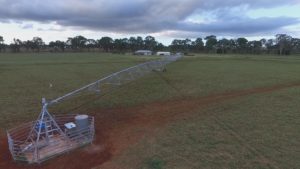
The Crumptons family farms are in the Kingaroy district the Peanut Capital of Australia. Crumptons have the potential in the future to provide a more reliable source of product for their customers by installing irrigation on some of the existing farms.
Crumptons primarily services the farmers within the dryland region of the South Burnett however peanuts are also sourced from all other major peanut growing areas including Tolga (in Nth QLD), Central Queensland, North Burnet, Bundaberg, Wee Waa and Moree (Nth NSW).
The Peanut Process in Stages
Understanding the peanut process
Planting
Peanut seeds are planted into soft, well worked soil just a few centimetres below the surface usually between November and January. This soil preparation takes place months before planting usually from October through to January. Peanuts are planted in rows with seeds commonly deposited at a rate of between 6 and 10 seeds per metre. It only takes a few weeks for young plants to be visible. The dryland peanuts are planted at 1 x 25kg bag to the acre and irrigated peanuts are planted at double the rate of 2 x 25kg bags to the acre.
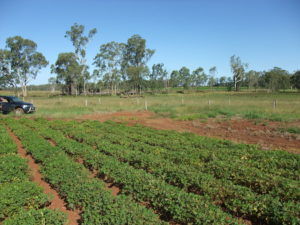
Development
Depending on the variety of peanut planted as well as other factors including seasonal conditions, a crop usually takes between 120 and 150 days to mature from the time of planting. During this time the green leafy bush spreads on top of the ground while the seed pods develop under the ground. The grower needs to monitor the crop for weed infiltration and fungus infection as well as ensuring the soil surrounding the plants is well maintained and remains soft throughout the development stage.
Harvesting
Once maturity is reached, usually in March or April, harvesting will begin. This process starts with the peanut plants being cut and dug. This is done using a specially designed machine which cuts the taproot of the plant just below the peanut seed pods and then uproots the entire plant, in the process removing excess soil and placing it on top of the ground in rows to dry out. The drying out process is 4-5 days if the weather is favourable. Once the peanuts have dried out to a satisfactory level the crop then undergoes a process called thrashing. A thrasher is another specially designed machine which thrashes the bush, separating the peanuts from the bush. The peanuts are separated and blown into a bin and the bush is expelled out of the machine back on the ground. Farmers have a couple of choices. They can pre clean and dry the peanuts themselves or send them to Crumptons and they will do these stages at the farmers request. The pre cleaning process removes foreign material (dirt, rocks, sticks, peanut stalks). This is done by a machine which separates the peanuts by size, being the good in shell peanuts and the foreign material. The pre cleaning process makes the drying process easier.
The drying of the peanuts is done on farm or at the factory. The peanuts are usually put into drying silos’. A drying silo has a fan which blows hot and dry air through the product which removes the moisture over a period of time. Peanuts are dried to a safe level to prevent them going mouldy.
The peanuts are moved from the farm and delivered to Crumpton Interstate’s processing plant at Murphy’s Road Crawford by truck while the leaf matter remains at the farm. The left over leaf from the peanut bush is often baled into large round bales of peanut hay for stock feed.
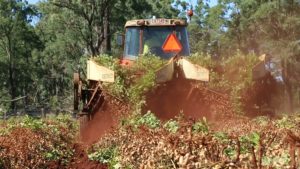
Intake
The intake is the receiving point of the farmer’s crop to our facility, this starts when the harvest begins usually early March – April. They are weighed on arrival, allocated a silo, tipped in a pit, pre-cleaned and then put into a nominated silo. It is at this point if peanuts are wet they can be dried. All grower’s lots are kept separate. This is a practice that is unique to Crumptons; we are the only processors that keep all farmers stock stored and processed separately. This practice also allows us to trace the lot of peanuts back to the paddock in which they were grown. Once a grower has delivered an entire lot and they are dry, that lot can then be shelled. A lot can be any size, depending on the farmer. One lot can be up to 600 tonne or it could be as small as 10 tonne, this will depend on the size of the paddock and the yield of the peanuts. Intake usually starts when harvesting starts in March/April and will continue until all of the farmer’s crops are delivered. This will depend on the size of the farmer’s crops. We try to get the Intake process completed as soon as possible.
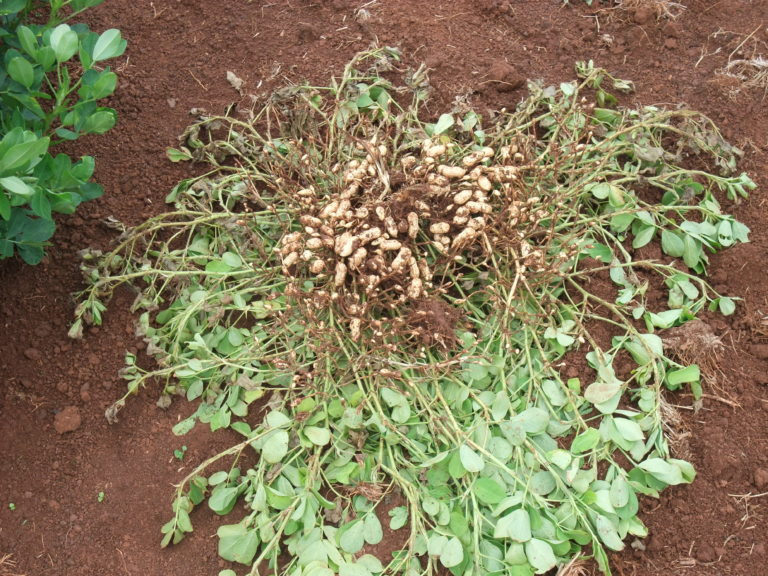
Shelling
At this point a lot number is allocated to the grower. The shelling of the lot commences. During the shelling process the peanuts are cleaned and shells removed. Also during this process
the nut in shell product if suitable is separated and kept. Shelling is a continuous process, first a cleaner removes sand & dirt using sieves, rocks and stones are then removed by a gravity separator and hay & pops are removed with aspiration. Large foreign material is screened out such as corn cobs, sticks etc. The peanuts then pass over a 2nd De-stoner before being fed into the sheller. The sheller smashes off the shells and a fan is used to suck away the loosened shells, all unshelled product is returned back to the start of the sheller. The final product is run over a gravity separator to further remove any unshelled product, foreign material such as peanut stalks & sticks and any other foreign material from the good shelled kernels. All good shelled material is sent to the grading room via a large bucket elevator where it will be graded by size & quality. The shelling is a continuous process, once on lot is finished and the shelling plant has been cleaned down another lot is started on.
Grading
In the grading process the shelled peanuts are graded into their various sizes using screens. The peanuts pass through a process including Shakers, Rollers, Colour Sorters, X-ray and Magnets. This process is specifically designed to remove any foreign material and to grade every peanut by size. The grading room is constantly being improved and updated with the latest in technology and equipment. After passing through all the quality control processes the peanuts pass over a grading deck that utilises purpose made screens that sort the peanuts into their different grades. Once graded the peanuts are stored in bulk bags. From this point they can be sold as raw product or go to the blanching plant to be blanched or roasted.
Blanching
The majority ofblanching-plant-20 peanuts we sell are blanched peanuts. The blanching plant receives raw shelled and graded product. Firstly the product is run through the roaster/dryer at a low temperature to make the skin easy to remove and then goes over the blanchers which are abrasive rollers that rub off the skin, there is fan which sucks off the skins (skins are used for stock feed). The peanuts are then sorted using colour sorters to remove unblanched, rejects and foreign material. They are then sorted a second time, before finally passing through metal detectors and being placed into bulk bags or stainless steel bins to be packed into smaller packs. Product also passes through an X-ray machine during the blanching process to make sure product is free from foreign material such as stones, metal & glass etc.
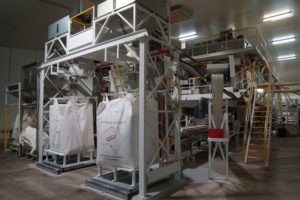
Roasting
Once blanched, peanuts can then be dry roasted. Peanuts are fed into a purpose built gas operated roaster, the peanuts travel along a belt inside the roaster and can be roasted to a customers blanching-plant-31required specification by altering the temperature. Roasting can be done on small or larger lots. We are also able to roast nut in shell and raw product to produce roasted skin on peanuts.

Granulating
Granulating is chopping nuts to produce diced peanuts which can be used for many things such as toppings on Ice Cream. We have a separate section of the plant, where we can do granulating of roasted product. The granulating process takes roasted peanuts which pass through a dicing machine. This machine dices the peanuts into small pieces and they are then sieved into oversize, accepts and the small/meal. The oversize are returned to the start of the Granulating process and run through again until all gone.
Quality Assurance in Practice
Crumpton Interstate operate a certified HACCP Food Safety Management System. All products that Crumptons produce and sell can be traced right back to the farmer who grew it. Crumptons approach Quality Assurance with a serious and professional attitude, all plant equipment and processes are constantly reviewed for ways to improve or upgrade both equipment and processes so as to deliver the highest possible quality product to our customers. All quality control equipment and processes such as Colour Sorters, X-Ray, Magnets and Metal Detectors are constantly inspected so as to maintain our quality control process. Crumpton Interstates Quality Assurance program is annually audited by SAI global to ensure it is compliant and remains up to date with industry standards. Crumpton Interstates products are also certified as Kosher.
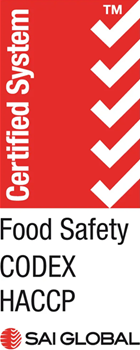
Safe Work Practices
Crumpton Interstate takes Workplace Health & Safety seriously. All of Crumptons operations both on the farm and in the factories are designed and operate to a set of procedures and guidelines to ensure the safety of not only our staff but any visitors to our sites. Crumptons employ the services of WPH&S consultant Lyle Goschnick of BIZsupport Pty Ltd. Lyle makes sure Crumptons WH&S standards and procedures are maintained and remain compliant and up to date with government WH&S legislation. Crumptons also has a WH&S team comprising members of staff from all departments of Crumptons business, this team along with Lyle raise and address any WH&S related issues or concerns that may present themselves.

